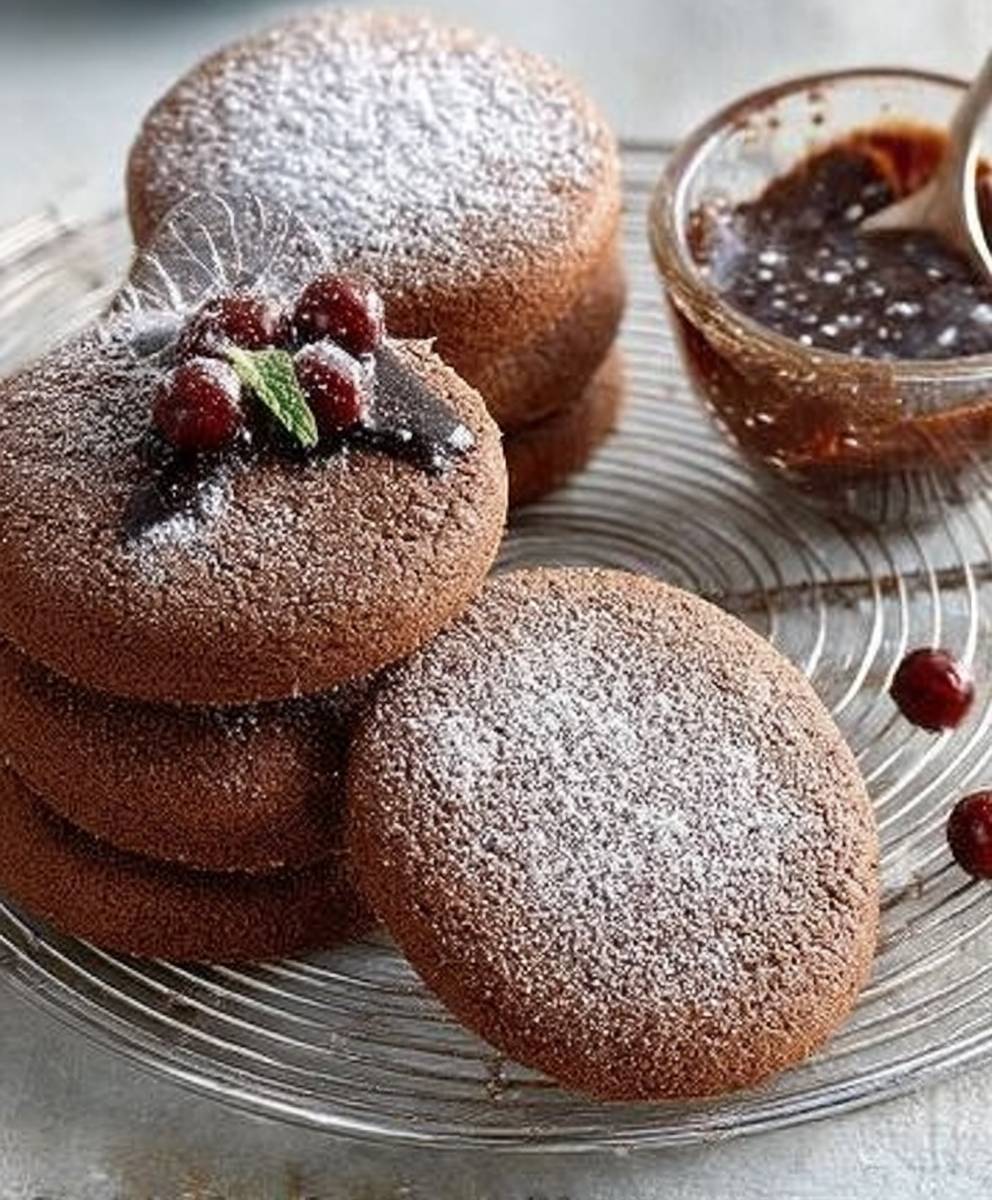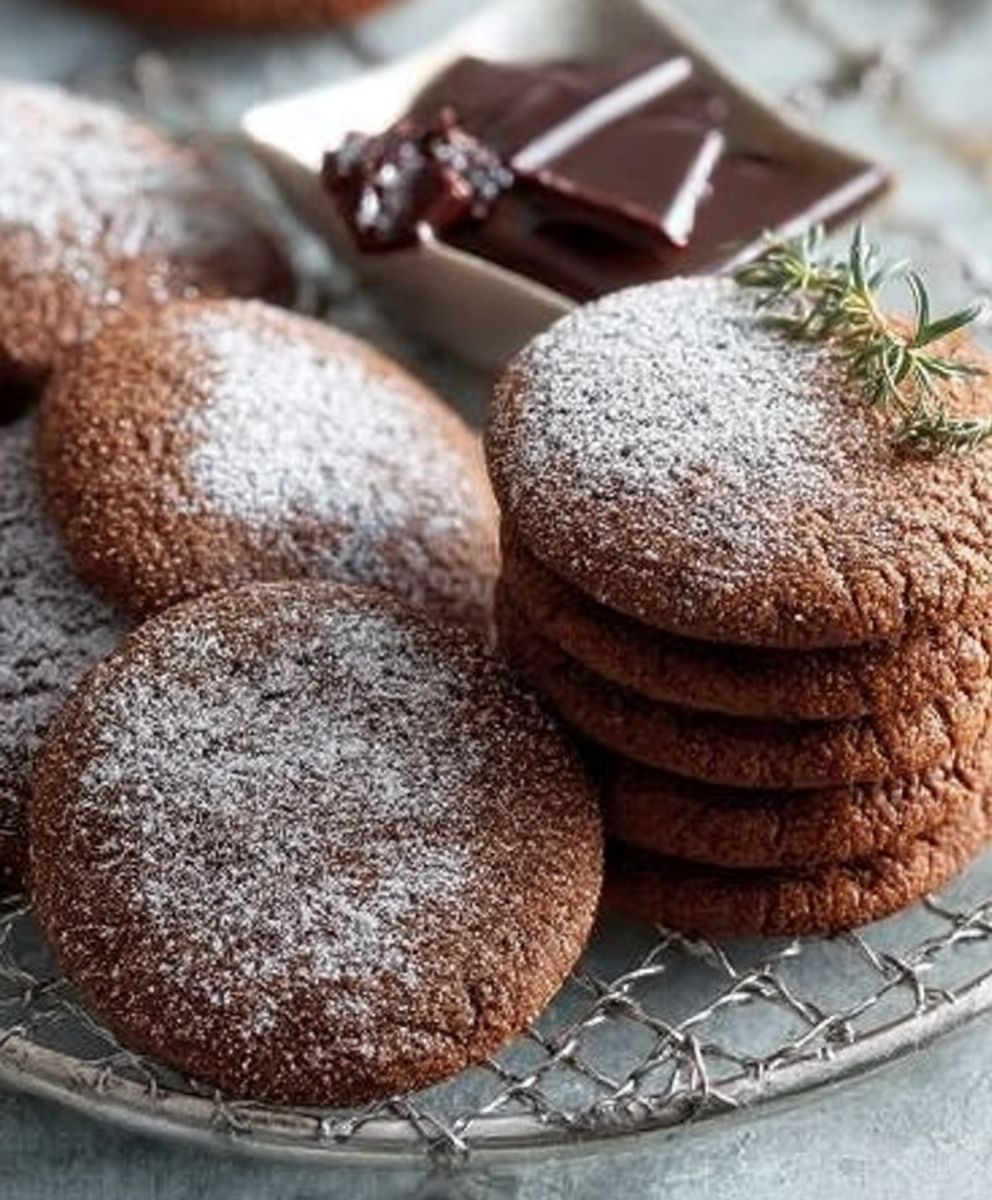Chocolate Cutout Cookies: Is there anything that screams holiday cheer quite like them? I think not! Imagine the rich, dark aroma of chocolate filling your kitchen as you roll out the dough, the joyful anticipation of decorating each cookie with vibrant sprinkles and icing, and finally, the satisfying crunch followed by the melt-in-your-mouth chocolatey goodness. These aren’t just cookies; they’re edible memories waiting to be made.
Cutout cookies, in general, have a long and fascinating history, tracing back to medieval Europe where gingerbread was often shaped and decorated for festive occasions. While the exact origins of chocolate cutout cookies are a bit more modern, they’ve quickly become a beloved tradition in countless households, especially during Christmas and other winter holidays. The addition of chocolate elevates the classic cutout cookie to a whole new level of indulgence.
What makes these cookies so irresistible? It’s the perfect combination of factors. The rich, slightly bitter chocolate balances the sweetness of the icing, creating a flavor profile that appeals to both kids and adults. The crisp edges and soft center offer a delightful textural contrast. And, let’s be honest, the act of decorating them is pure fun! Whether you’re a seasoned baker or a complete novice, making chocolate cutout cookies is a rewarding experience that brings people together. So, grab your rolling pin, gather your loved ones, and let’s get baking!
Ingredients:
- For the Cookies:
- 3 cups all-purpose flour, plus more for dusting
- 1 cup unsweetened cocoa powder
- 1 teaspoon baking powder
- 1/2 teaspoon baking soda
- 1/4 teaspoon salt
- 1 cup (2 sticks) unsalted butter, softened
- 1 1/2 cups granulated sugar
- 2 large eggs
- 2 teaspoons vanilla extract
- 1/2 cup milk
- For the Royal Icing:
- 4 cups powdered sugar, sifted
- 3 tablespoons meringue powder
- 1/2 cup warm water, plus more as needed
- Gel food coloring (various colors)
Preparing the Chocolate Cookie Dough
- Combine Dry Ingredients: In a large bowl, whisk together the flour, cocoa powder, baking powder, baking soda, and salt. Make sure everything is evenly distributed. This ensures a consistent flavor and texture throughout the cookies. I like to whisk for at least 30 seconds to really get it all mixed up.
- Cream Butter and Sugar: In a separate large bowl, using an electric mixer, cream together the softened butter and granulated sugar until light and fluffy. This usually takes about 3-5 minutes. Don’t rush this step! The creaming process incorporates air, which helps create a tender cookie. Scrape down the sides of the bowl occasionally to ensure everything is evenly mixed.
- Add Eggs and Vanilla: Beat in the eggs one at a time, then stir in the vanilla extract. Make sure each egg is fully incorporated before adding the next. The vanilla extract adds a lovely depth of flavor to the chocolate.
- Combine Wet and Dry Ingredients: Gradually add the dry ingredients to the wet ingredients, alternating with the milk, beginning and ending with the dry ingredients. Mix until just combined. Be careful not to overmix the dough, as this can result in tough cookies. I usually add about a third of the dry ingredients, then half the milk, then another third of the dry ingredients, the remaining milk, and finally the last of the dry ingredients.
- Divide and Chill the Dough: Divide the dough in half, flatten each half into a disc, wrap tightly in plastic wrap, and refrigerate for at least 2 hours, or preferably overnight. Chilling the dough is crucial! It allows the gluten to relax, which prevents the cookies from spreading too much during baking. It also makes the dough easier to handle.
Rolling and Cutting the Cookies
- Preheat Oven and Prepare Baking Sheets: Preheat your oven to 350°F (175°C). Line baking sheets with parchment paper or silicone baking mats. This prevents the cookies from sticking and makes cleanup a breeze.
- Roll Out the Dough: On a lightly floured surface, roll out one disc of dough to about 1/4 inch thickness. Work quickly, as the dough will start to soften as it warms up. If the dough is sticking, add a little more flour to the surface.
- Cut Out Shapes: Use cookie cutters to cut out desired shapes. I love using a variety of shapes, like stars, hearts, and gingerbread men, especially around the holidays.
- Place on Baking Sheets: Carefully transfer the cut-out cookies to the prepared baking sheets, leaving about 1 inch of space between each cookie.
- Bake: Bake for 8-10 minutes, or until the edges are set. Keep a close eye on the cookies, as they can burn easily. The baking time will depend on the size and thickness of your cookies.
- Cool: Let the cookies cool on the baking sheets for a few minutes before transferring them to a wire rack to cool completely. This prevents them from breaking.
- Repeat: Repeat the rolling, cutting, and baking process with the remaining dough. You can re-roll the scraps of dough, but keep in mind that the more you re-roll the dough, the tougher the cookies will become.
Preparing the Royal Icing
- Combine Ingredients: In a large bowl, using an electric mixer, combine the sifted powdered sugar and meringue powder. Sifting the powdered sugar is important to remove any lumps, which will result in a smoother icing.
- Add Water: Gradually add the warm water, mixing on low speed until the icing is smooth and glossy. Add more water, 1 teaspoon at a time, if needed to reach the desired consistency. The consistency of the icing is key to successful decorating.
- Divide and Color: Divide the icing into separate bowls, depending on how many colors you want to use. Add gel food coloring to each bowl, a few drops at a time, and mix well until you achieve the desired color. Gel food coloring is preferred over liquid food coloring because it is more concentrated and won’t thin out the icing as much.
- Adjust Consistency: Adjust the consistency of the icing as needed. For outlining, you want a thicker consistency that will hold its shape. For flooding, you want a thinner consistency that will spread easily. To thicken the icing, add more powdered sugar, 1 tablespoon at a time. To thin the icing, add more water, 1/2 teaspoon at a time.
- Prepare Piping Bags: Transfer the icing to piping bags fitted with small round tips. You can also use squeeze bottles for flooding.
Decorating the Cookies
- Outline the Cookies: Use the thicker icing to outline the edges of the cookies. This will create a dam to prevent the flooding icing from running off the edges.
- Flood the Cookies: Use the thinner icing to flood the inside of the outlined cookies. Gently shake the cookies to help the icing spread evenly. You can use a toothpick or scribe tool to pop any air bubbles.
- Add Details: Once the base layer of icing has dried slightly, you can add details, such as sprinkles, edible glitter, or additional icing designs. Get creative and have fun!
- Let the Icing Dry: Let the icing dry completely before stacking or packaging the cookies. This usually takes several hours, or even overnight. The drying time will depend on the humidity and the thickness of the icing.
Tips for Success:
- Use high-quality ingredients: The better the ingredients, the better the cookies will taste.
- Don’t overmix the dough: Overmixing can result in tough cookies.
- Chill the dough thoroughly: Chilling the dough is essential for preventing the cookies from spreading.
- Roll out the dough evenly: This will ensure that the cookies bake evenly.
- Don’t overbake the cookies: Overbaked cookies will be dry and crumbly.
- Adjust the consistency of the icing as needed: The consistency of the icing is key to successful decorating.
- Let the icing dry completely: This will prevent the icing from smudging.
Storage Instructions:
Store the decorated cookies in an airtight container at room temperature for up to 1 week.
Freezing Instructions:
You can freeze the undecorated cookies for up to 3 months. Wrap them tightly in plastic wrap and then place them in a freezer-safe bag or container. Thaw the cookies completely before decorating.

Conclusion:
And there you have it! These Chocolate Cutout Cookies are more than just a recipe; they’re an invitation to create memories, spread joy, and indulge in a truly delightful treat. I genuinely believe this recipe is a must-try for so many reasons. First and foremost, the rich, decadent chocolate flavor is simply irresistible. It’s not overly sweet, but perfectly balanced, making it a crowd-pleaser for both kids and adults. The texture is also spot-on crisp edges with a slightly chewy center, providing the perfect bite every time.
But beyond the taste and texture, what truly sets these cookies apart is their versatility. They’re perfect for any occasion, from holiday gatherings to simple afternoon snacks. Imagine these adorning your Christmas tree, nestled in a Valentine’s Day gift basket, or simply enjoyed with a warm glass of milk on a cozy evening. The possibilities are endless!
Speaking of possibilities, let’s talk about serving suggestions and variations. While these cookies are delicious on their own, a little embellishment never hurts! For a classic touch, try dusting them with powdered sugar or drizzling them with melted white chocolate. If you’re feeling adventurous, you could even dip them in dark chocolate and sprinkle them with sea salt for a sophisticated twist.
For the holidays, consider using festive cookie cutters and decorating them with colorful icing and sprinkles. Get the kids involved it’s a fantastic way to spend quality time together and create lasting memories. You could even host a cookie decorating party and let everyone unleash their inner artist!
And don’t be afraid to experiment with different flavors. A dash of cinnamon or nutmeg in the dough can add a warm, comforting touch. Or, for a more intense chocolate flavor, try using Dutch-processed cocoa powder. You could even add a hint of espresso powder for a mocha-inspired treat.
If you’re looking for a vegan option, simply substitute the butter with a vegan butter alternative and the egg with a flax egg (1 tablespoon of ground flaxseed mixed with 3 tablespoons of water). The results are surprisingly delicious!
I’m so confident that you’ll love these Chocolate Cutout Cookies that I urge you to give them a try. Don’t be intimidated by the thought of making cutout cookies this recipe is surprisingly easy to follow, even for beginner bakers. Just remember to chill the dough thoroughly before rolling it out, and you’ll be well on your way to creating perfect cookies every time.
Once you’ve baked your batch of these delightful treats, I would absolutely love to hear about your experience. Did you try any variations? What were your favorite decorations? Did you share them with friends and family? Please, share your photos and stories in the comments below! Your feedback is invaluable, and it helps me continue to create recipes that you’ll love.
So, grab your ingredients, preheat your oven, and get ready to embark on a delicious baking adventure. I promise, these Chocolate Cutout Cookies will become a new family favorite. Happy baking!
Chocolate Cutout Cookies: The Ultimate Guide to Baking Perfect Shapes
Delicious, festive chocolate sugar cookies decorated with vibrant royal icing, perfect for holidays or any special occasion!
Ingredients
- 3 cups all-purpose flour, plus more for dusting
- 1 cup unsweetened cocoa powder
- 1 teaspoon baking powder
- 1/2 teaspoon baking soda
- 1/4 teaspoon salt
- 1 cup (2 sticks) unsalted butter, softened
- 1 1/2 cups granulated sugar
- 2 large eggs
- 2 teaspoons vanilla extract
- 1/2 cup milk
- 4 cups powdered sugar, sifted
- 3 tablespoons meringue powder
- 1/2 cup warm water, plus more as needed
- Gel food coloring (various colors)
Instructions
- In a large bowl, whisk together the flour, cocoa powder, baking powder, baking soda, and salt. Make sure everything is evenly distributed. Whisk for at least 30 seconds.
- In a separate large bowl, using an electric mixer, cream together the softened butter and granulated sugar until light and fluffy (3-5 minutes). Scrape down the sides of the bowl occasionally.
- Beat in the eggs one at a time, then stir in the vanilla extract. Make sure each egg is fully incorporated before adding the next.
- Gradually add the dry ingredients to the wet ingredients, alternating with the milk, beginning and ending with the dry ingredients. Mix until just combined. Do not overmix.
- Divide the dough in half, flatten each half into a disc, wrap tightly in plastic wrap, and refrigerate for at least 2 hours, or preferably overnight.
- Preheat your oven to 350°F (175°C). Line baking sheets with parchment paper or silicone baking mats.
- On a lightly floured surface, roll out one disc of dough to about 1/4 inch thickness. Work quickly. If the dough is sticking, add a little more flour to the surface.
- Use cookie cutters to cut out desired shapes.
- Carefully transfer the cut-out cookies to the prepared baking sheets, leaving about 1 inch of space between each cookie.
- Bake for 8-10 minutes, or until the edges are set. Keep a close eye on the cookies, as they can burn easily.
- Let the cookies cool on the baking sheets for a few minutes before transferring them to a wire rack to cool completely.
- Repeat the rolling, cutting, and baking process with the remaining dough.
- In a large bowl, using an electric mixer, combine the sifted powdered sugar and meringue powder.
- Gradually add the warm water, mixing on low speed until the icing is smooth and glossy. Add more water, 1 teaspoon at a time, if needed to reach the desired consistency.
- Divide the icing into separate bowls, depending on how many colors you want to use. Add gel food coloring to each bowl, a few drops at a time, and mix well until you achieve the desired color.
- Adjust the consistency of the icing as needed. For outlining, you want a thicker consistency. For flooding, you want a thinner consistency. To thicken the icing, add more powdered sugar, 1 tablespoon at a time. To thin the icing, add more water, 1/2 teaspoon at a time.
- Transfer the icing to piping bags fitted with small round tips. You can also use squeeze bottles for flooding.
- Use the thicker icing to outline the edges of the cookies.
- Use the thinner icing to flood the inside of the outlined cookies. Gently shake the cookies to help the icing spread evenly. You can use a toothpick or scribe tool to pop any air bubbles.
- Once the base layer of icing has dried slightly, you can add details, such as sprinkles, edible glitter, or additional icing designs.
- Let the icing dry completely before stacking or packaging the cookies. This usually takes several hours, or even overnight.
Notes
- Use high-quality ingredients for the best flavor.
- Don’t overmix the cookie dough.
- Chilling the dough is essential for preventing spreading.
- Roll out the dough evenly for even baking.
- Don’t overbake the cookies.
- Adjust the consistency of the icing as needed for decorating.
- Let the icing dry completely before storing.
- Store the decorated cookies in an airtight container at room temperature for up to 1 week.
- You can freeze the undecorated cookies for up to 3 months. Wrap them tightly in plastic wrap and then place them in a freezer-safe bag or container. Thaw the cookies completely before decorating.

